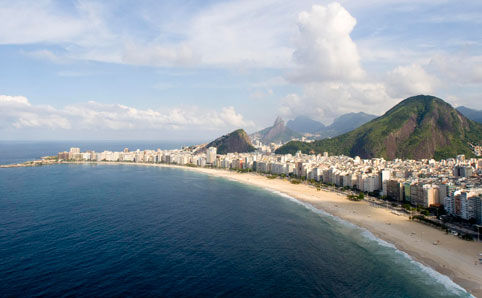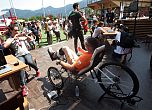
Probably the most famous strip of sand anywere in the world, Copacabana Beach encapsulated the flamboyant '80s with its trunk-wearing, bronzed playboys and cocktail umbrella image. It hasn't been a non-stop glamour ride since, however, and the gloss wore off to reveal a gritty and congested strip of faded glories and seedy late-night tales.
Today, Copa is back and once again means business. Some of the best restaurants in the city contrast with some of the oldest, most idiosyncratic bars around, while café culture threatens to overtake the cheese pie-and-açaí juice stops in the locals' affections. The neighbourhood turned 120 years old on 6 June, 2012, and to commemorate, we have run down the best that one of the most famous neighbourhoods in the world has to offer.
Eating
It may not be immediately obvious to the untrained eye, but pockets of Copacabana offer some of the best eating in the city.
 Azumi - The Japanese gem outdoes its glamorous cousins across town by virtue of pure authenticity. Complete with two screened-off rooms where the cushions are strewn on the floor and getting up after two cups of sake becomes tricky.
Azumi - The Japanese gem outdoes its glamorous cousins across town by virtue of pure authenticity. Complete with two screened-off rooms where the cushions are strewn on the floor and getting up after two cups of sake becomes tricky.
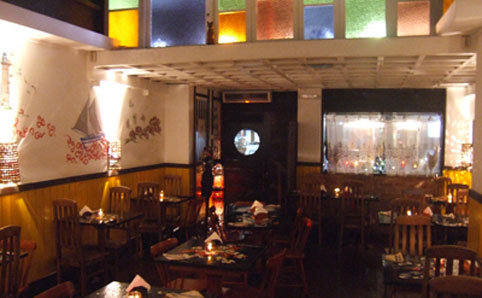 Le Blé Noir - The spirit of France in pancake form with chef Alain Caro 's dramatic fillings for the black-flour packages. The atmosphere is cosy and romantic, but the service can be surprisingly severe given the candle-lit surrounds.
Le Blé Noir - The spirit of France in pancake form with chef Alain Caro 's dramatic fillings for the black-flour packages. The atmosphere is cosy and romantic, but the service can be surprisingly severe given the candle-lit surrounds.
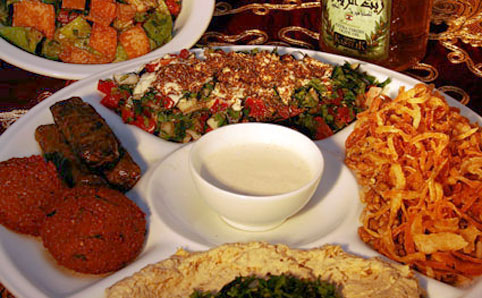 Amir - Amir caters for fans of Arabian food with the creamiest houmous imaginable and shwarmas and kaftas wrapped in enormous sheets of fine flatbread. Go with a group, order the 'feast' and marvel as the delicious platters just keep coming.
Amir - Amir caters for fans of Arabian food with the creamiest houmous imaginable and shwarmas and kaftas wrapped in enormous sheets of fine flatbread. Go with a group, order the 'feast' and marvel as the delicious platters just keep coming.
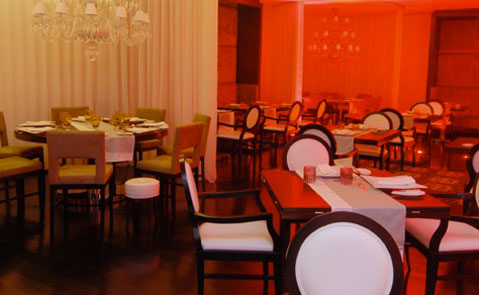 Le Pré Catalan - Celebrate Copacabana’s returning glory days with three words; Le Pré Catalan. Try the ‘shellfish’ trilogy; lobster in champagne, grilled crayfish and scallops on tomato chutney and shrimp with palm hearts.
Le Pré Catalan - Celebrate Copacabana’s returning glory days with three words; Le Pré Catalan. Try the ‘shellfish’ trilogy; lobster in champagne, grilled crayfish and scallops on tomato chutney and shrimp with palm hearts.
Drinking
Copacabana’s kiosks are dotted the full length of the beach and offer everything from exotic cocktails to Chinese food, but mostly lots and lots of ice-cold Skol. When it comes to bars, there are four stone-cold classics that represent their home perfectly. At the Leme end sits Cervantes, famous for thick sandwiches and great beer, both served lightening fast until the very small hours of the morning.
In the heart of Copa between Siqueira Campos and Cardeal Arcoverde Metrô stations stands the master of the beer snack, Pavão Azul. Definitely no airs nor graces, character is everything, and the impossibility of getting a seat any day of the week after 6pm tells its own story.
Back towards the tunnel to Botafogo, Adega Pérola has similarly mastered their bar food over the sixty-odd years in business, the marinated octopus claiming the regulars’ affections. Completing the quartet at the Arpoador end of the strip is Bip Bip, where the live samba occupies almost all the indoor space, leaving just enough room to access the beer fridge (nothing as uneccesary as waiters here) and the pavement outside to host the appreciative masses.
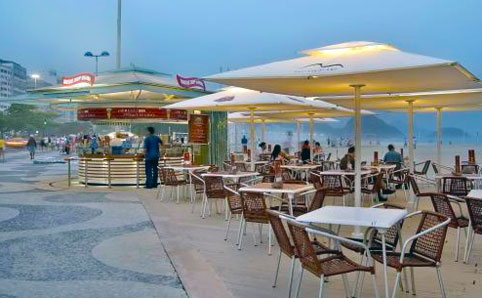
Cafés
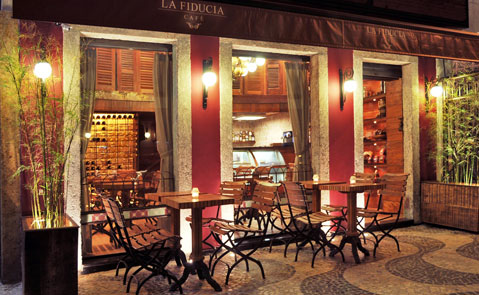 La Fiducia Café - When the restaurant of the same name opened a smaller café on chic Rua Duvivier back in 2010, it paved the way for a return of café culture in the neighbourhood. An ideal lunchtime stop off.
La Fiducia Café - When the restaurant of the same name opened a smaller café on chic Rua Duvivier back in 2010, it paved the way for a return of café culture in the neighbourhood. An ideal lunchtime stop off.
 Guerin - Following Fiducia's path, Guerin may reside on Copa's thundering main road, but the newcomer offers a genuine slice of the Parisian sights and smells that the chef was brought up with in his grandfather's bakery.
Guerin - Following Fiducia's path, Guerin may reside on Copa's thundering main road, but the newcomer offers a genuine slice of the Parisian sights and smells that the chef was brought up with in his grandfather's bakery.
Around Town
There is nothing more 'Copacabana' than walking down the high street in just a pair of trunks and flip flops on the way for a quick hit of sun, sea and sand. The beach is less 'tribal' than Ipanema, but the area around Copacabana Palace hotel is the most gay-friendly strip, sign-posted by the Rainbow kiosk. This is also the epicentre of the city's annual New Year's blowout, so heading for a swim on 1 January in the wake of a million party people is not recommended.
At its southernmost tip stands Copacabana Fort. Built literally into the rock, the military museum can be accessed for a fascinating look at an underwater bunker, or clamber across the surface and take in the view back across the full sweep of sand towards Sugarloaf Mountain, an unnervingly large gun poking out behind you.

Shopping and Film
Strolling the 30 or so roads that dissect the three main arteries Barata Ribeiro, Nossa Senhora de Copacabana and Avenida Atlântica will reveal even more of the hidden charms that make the locals so passionate about their boisterous home while outsiders cower away.
Baratos da Ribeiro is a joyously cluttered offering of second hand books and records awaiting discovery. The shop is also the centre of two reading and music clubs and a focus for devotees to such collectibles.
If antiques are your thing (and the once ultra-expensive apartments nearby are a rich source of second hand treats), there are two malls dedicated to interesting old trinkets, lamps and furniture. Shopping dos Antiquarios (Rua Siqueira Campos 143) is at first a dim and bleak prospect, but persistence finds it stuffed with small shops and shacks ripe for sifting through on a rainy day. Slightly more upmarket and in a beautiful art-deco building is Cassino Atlântico mall, where galleries like Movimento thrive, and the weekends become a huge, expensive flea-market as the shops turn inside out and onto the corridors.
Continuing the theme of resuscitating the past, Cine Joia is a lovingly restored indie cinema hell-bent on avoiding the mainstream release schedules and offering obscure national and international flicks in absurdly comfortable, old-fashioned chairs. The spirit of the past lives on, but you can't help feeling that Copacabana is going places.

